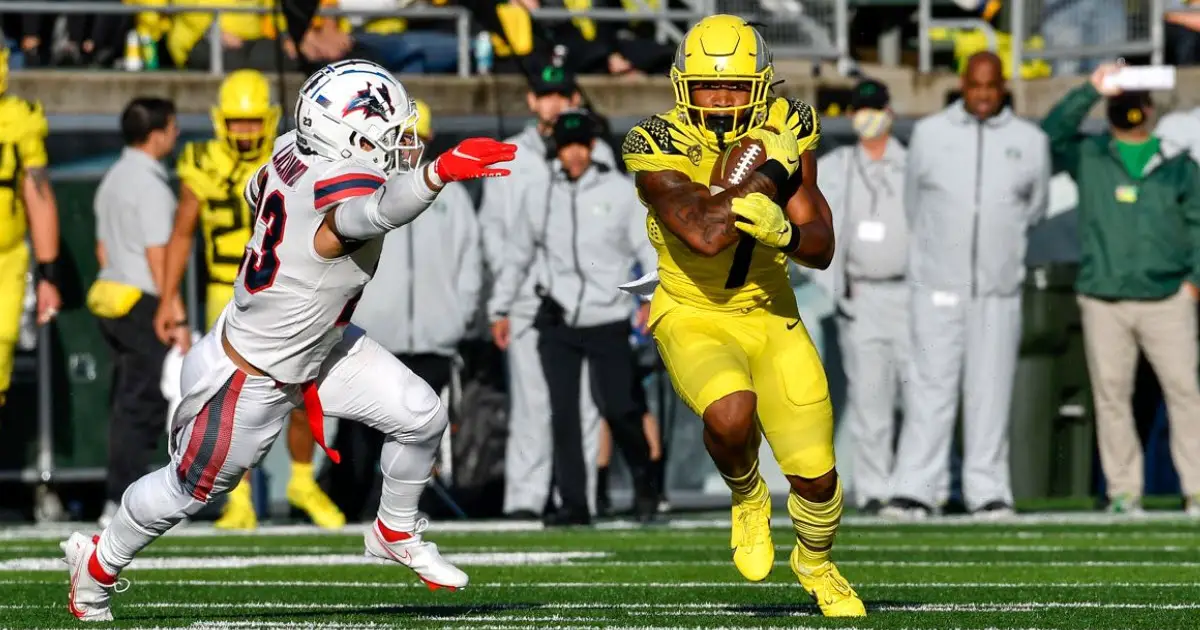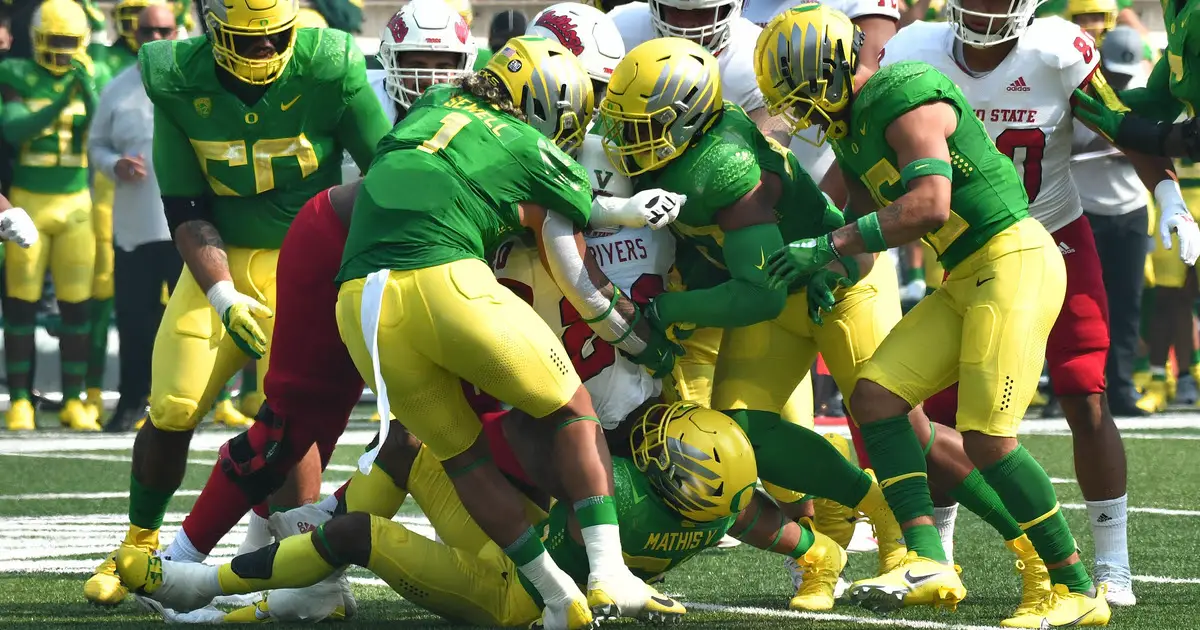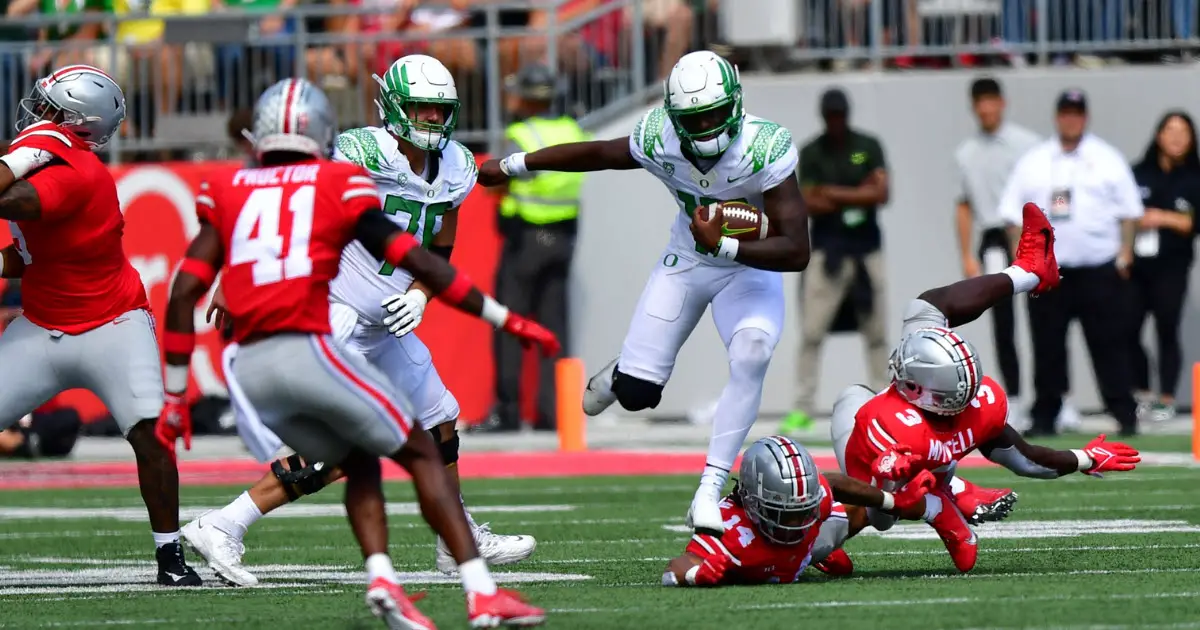We are only three weeks into the 2021 college football season, and already it is proving to be a chaotic year. The perennial top teams have all been challenged to date. Alabama escaped Florida with a narrow victory, Georgia Tech gave Clemson a scare, and Oklahoma barely survived a game against Nebraska — and this was only last weekend. In Week 1, Oregon scored a monumental victory over Ohio State, and Georgia took down Clemson. No team is safe this year.
There are fewer undefeated teams at this time than in a normal year. Oregon is the Pac-12’s lone undefeated team, with UCLA falling to Fresno State and Arizona State losing to BYU. BYU has beaten three Pac-12 teams in as many weeks, which is a bad sign as to how strong the Pac-12 is going to be this year. A growing trend this year has been that Group of Five teams and lowly Power-Five teams are rising up to give the college football blue bloods a challenge.
Even FCS schools are getting in on the upsets. To date, the FCS has won 10 games against FBS opponents. That number is outside the norm, but not unprecedented, as the last time the FCS won 10 games against the FBS was back in 2016. The real shock is how many of these beaten teams are Power-Five teams — that is highly unusual. Washington, Arizona, Vanderbilt and Florida State have all lost to an FCS opponent this season.

CJ Verdell and Oregon had a slow start against Stony Brook but ended the game with a clear victory.
Extra Eligibility for Veterans
COVID-19 is one contributing factor to all the chaos this year, though it’s not disruptive in the same way it was last year. Last year, COVID-19 wreaked havoc by forcing game cancellations, rescheduling, player opt-outs, and a much shortened off season. However, the carry over from last year is that all players were granted an extra year of eligibility. Yes, there were still players who opted to enter the NFL draft rather than play another season of college football, but many more were given another year to play football when they would normally have retired due to loss of eligibility.
With so many players remaining for another year, the normal talent gap between the top and bottom of college football has shrunk. For most schools, development is the key to success, and it typically takes multiple years to see results in players. So being able to retain a senior for a fifth, or even sixth, year of play can make all the difference. Physically, these players are bigger, but most importantly they have more game experience.
Now when compared to a team like Oregon, which lost a great deal of senior talent before the 2020 season started and lost even more after it concluded, and there is a major age and experience gap. Oregon has players with far higher ceilings and potential than teams like Stony Brook and Fresno State. However, what Oregon lacks currently is experience.

Oregon survived their meeting with Fresno State, even if it was only by seven points.
Oregon was able to overcome both opponents despite bouts of inadequate play. However, not all Power-Five teams are so lucky. UCLA squared off against Fresno State last Saturday, and their roster didn’t have the same caliber of raw talent that Oregon’s does, which made all the difference. Oregon survived, while losing some major star players, while UCLA fell in the waning seconds of the game.
Teams like Fresno State have made incredible use out of the extra year they have had with their veterans. Normally, these players would be replaced by younger players with less experience. At many of these schools, freshman and sophomores don’t see the field as often as juniors and seniors — players who have put in years with the program. This is also not a one-off year, either. It will potentially affect the skill gap between programs for at least the next three years, since all student athletes gained an added year of eligibility. Every player effectively gained an extra red-shirt.
The Transfer Portal Has Real Impact
This may be the first year that we see the true impact of the transfer portal. There have been teams in the past that have benefited from the transfer portal in some meaningful ways, but this last off-season saw an explosion of transfers. For many top programs, like Oregon, there was a net loss of players from the transfer portal, as Oregon lost 10 players to other schools and gained zero. Of these players, however, only two ended up at Power-Five programs. Most went to Group of Five or FCS programs, elevating that program’s talent level.

For teams like Oregon there still still a major talent difference between them and Group of Five teams.
A prime example of this is Fresno State quarterback Jake Haener, who ripped apart Oregon’s and UCLA’s defenses. He is a spectacular player who was originally with Washington before he transferred to Fresno State. He has made the Bulldogs a much better team and brought his Power-Five-level talent to elevate their program.
Between the added year of eligibility and the transfer portal finally paying dividends for many teams, there is a real sense that the talent gap may be shrinking for the majority of college football. The upper echelon of teams at the very top still stand far apart from the majority of college football, but the rest of college football’s programs may be as close as they have ever been.
Is this a good thing for college football? Well, that is still up for debate, but it is certainly entertaining.
David Marsh
Portland, Oregon
Top Photo By: Tom Corno
 Andrew Mueller, the FishDuck.com Volunteer Editor for this article, works in higher education in Chicago, Illinois.
Andrew Mueller, the FishDuck.com Volunteer Editor for this article, works in higher education in Chicago, Illinois.
Related Articles:
Oregon Enters Playoffs Better Off Than Last Year
Will The Coaching Carousel Kill Oregon's CFP Chances?
The Playoff Formula Hasn't Changed
Oregon Aims to Bury Dawgs, Punch Playoff Ticket in Rivalry Clash
Huskies Are the New Beavers, Stay In Your Lane Kiffin, and the Civil Apple Cup War
Oregon Football: The X-Factor Vs. Washington

David Marsh is a high school social studies teacher in Portland, Oregon. As a teacher he is known for telling puns to his students who sometimes laugh out of sympathy, and being both eccentric about history and the Ducks.
David graduated from the University of Oregon in 2012 with Majors in: Medieval Studies, Religious Studies, and Geography. David began following Ducks Football after being in a car accident in 2012; finding football something new and exciting to learn about during this difficult time in his life. Now, he cannot see life without Oregon football.

